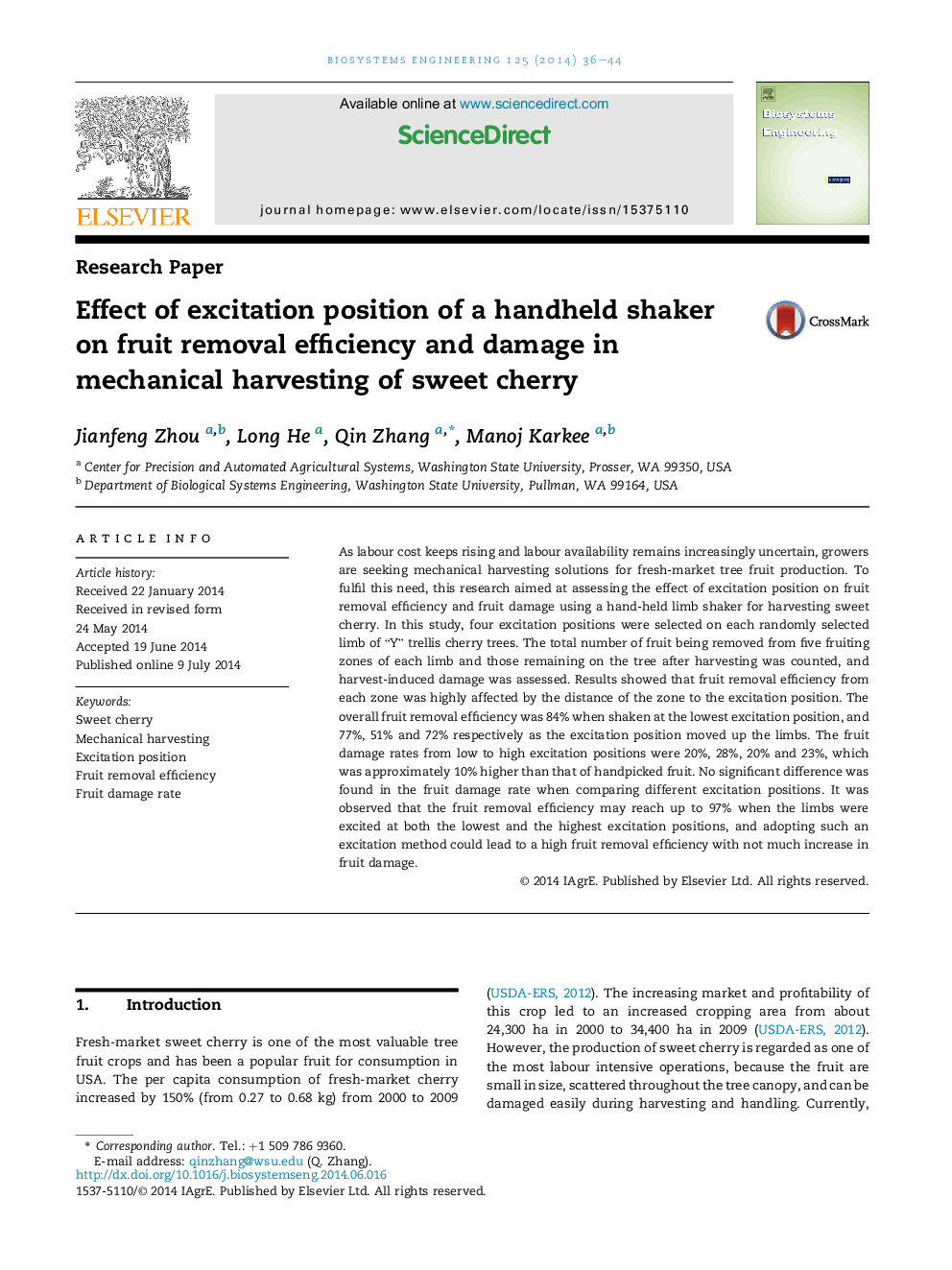| Article ID | Journal | Published Year | Pages | File Type |
|---|---|---|---|---|
| 1711160 | Biosystems Engineering | 2014 | 9 Pages |
•Fruit distribution, removal force and skin colour measured along a limb.•Fruit removal efficiency was heavily influenced by excitation position.•Damage rate was not affected by excitation position.•Two excitation positions on one limb obtain satisfied fruit removal efficiency.•Damage rate of fruit mechanically harvested was higher than handpicked.
As labour cost keeps rising and labour availability remains increasingly uncertain, growers are seeking mechanical harvesting solutions for fresh-market tree fruit production. To fulfil this need, this research aimed at assessing the effect of excitation position on fruit removal efficiency and fruit damage using a hand-held limb shaker for harvesting sweet cherry. In this study, four excitation positions were selected on each randomly selected limb of “Y” trellis cherry trees. The total number of fruit being removed from five fruiting zones of each limb and those remaining on the tree after harvesting was counted, and harvest-induced damage was assessed. Results showed that fruit removal efficiency from each zone was highly affected by the distance of the zone to the excitation position. The overall fruit removal efficiency was 84% when shaken at the lowest excitation position, and 77%, 51% and 72% respectively as the excitation position moved up the limbs. The fruit damage rates from low to high excitation positions were 20%, 28%, 20% and 23%, which was approximately 10% higher than that of handpicked fruit. No significant difference was found in the fruit damage rate when comparing different excitation positions. It was observed that the fruit removal efficiency may reach up to 97% when the limbs were excited at both the lowest and the highest excitation positions, and adopting such an excitation method could lead to a high fruit removal efficiency with not much increase in fruit damage.
